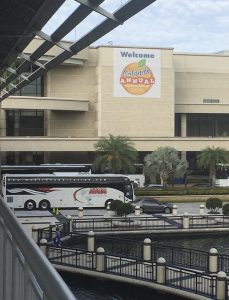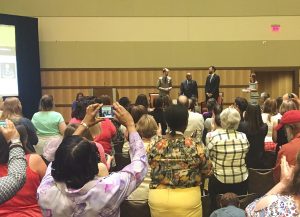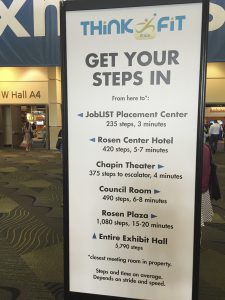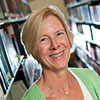This article is more than 5 years old.

If it’s late June, it must be time to jump on a plane and travel to some uncomfortably warm location to attend ALA Annual. This year the conference was held in Orlando and prior to the start of the conference the national news was filled with multiple terrible events occurring there. So, it was a unsettling time to travel to Orlando. ALA responded with recognition and programming. There was a memorial service for the Pulse shooting victims (video 1, video 2) and a blood drive. I was fortunate to attend a scheduled session that featured Congressman John Lewis along with his co-authors of the graphic novel March. Because he had just been in the news the same week in the Congressional sit-in, his appearance and talk brought the audience to their feet in support of his efforts. It was an inspiring program.

Most of my conference was spent in LITA (Library Information and Technology Association) meetings and programs due to my role as LITA Director-at-Large. One of its signature events, Top Tech Trends, had 5 panelists this time around and a bit of a format change. After each panelist briefly proclaimed their “trend” (concepts, collecting real time data, virtual reality, balance of security against access, super easy application development), a half hour was spent asking for panelist responses about information security questions that were posed. This was followed by a discussion of maker space trends and examples. My favorite exchange were the questions “what may be the most useless trend?” [Answers: YikYak, IOT (Internet of Things)] and “What tech things are you sick of hearing about?” [Answers: 3D printers, smart watches, maker spaces].
It seems I went with the “top trends” theme this time in my limited program attendance between meetings. I heard one of the expert panel members (Lindley Shedd, U of Alabama) from the NMC Horizon Report – 2015 Library Edition. She talked a bit about the process for paring down a huge list of possible topics to 18 ( a focus on emerging technologies in libraries – six key trends, six significant challenges, and six important developments). You might enjoy looking at the project’s workspace wiki to more about how the project is implemented. It was interesting that she compared this report with the recently published 2016 Top Trends in Academic Libraries to see what correlated between the two.
My next “top trends” was a LLAMA-BES panel session on Top Building Trends 2016. The panel contained both architects and library directors. Some gems from the session:
- (Looking for relevance in today’s environment?) Nothing transmits irrelevance like leaking roofs, old paint and furniture, outdated infrastructure.
- Lost arts – a place for community to come together. Not so much maker spaces as most know them. These range from garden to cooking to candlemaking).
- How can we make the collections (you know, those pesky books in stacks) attractive and focused part of the experience? Check out the book mountain in a Netherlands library. Maybe more useful in our library, consider lowing the stacks.
- Restrooms are a top trend. The call for gender neutral has architects looking for new ways to design them.
- Flexibility in a building means fewer permanent walls are being built.
- A move toward pop-up instruction/event space.
- Outdoor space is becoming more important – green space, outdoor movie screens, outdoor programming.
- Look to other industries for trends that could be valuable. Example cited: the hospitality industry focuses on transforming people from one point to another (the first 25 feet sets the experience).
My final comment has to do with how much walking one does at a typical ALA conference. In Orlando, the West Convention Center was connected to hotels, North/South OCCC halls and heaven knows what else. I had no trouble exceeding my 10,000 steps per day goal!


2 Comments on ‘Susan’s ALA Annual 2016 – Orlando Report’
Loving the step counts sign. Great write-up, Susan!
John Lewis?! ALA is so much cooler than SAA 🙂 I like the step count sign, too, and appreciate the high-level views on tech, building, and academic libraries.